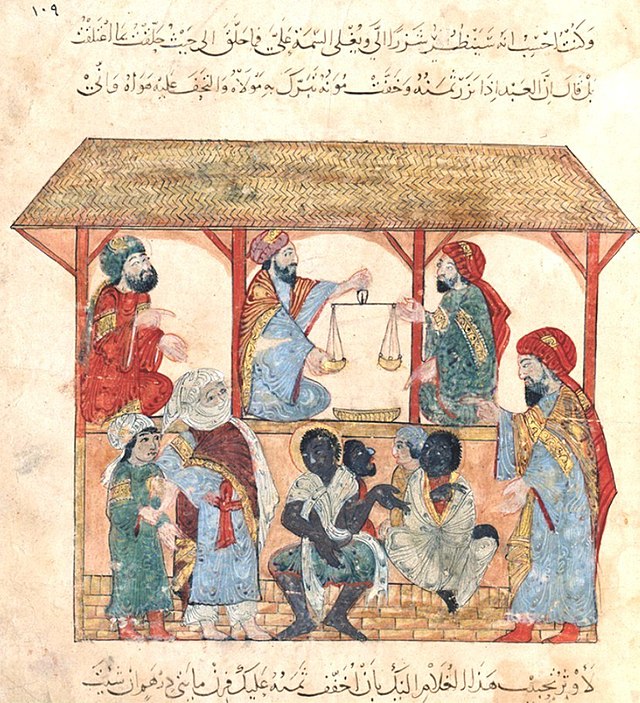Yahya ibn Mahmud al-Wasiti
13th-century Iraqi-Arab painter and calligrapher From Wikipedia, the free encyclopedia
Yahya ibn Mahmud al-Wasiti (Arabic: يحيى بن محمود الواسطي) was a 13th-century Iraqi-Arab[1][2][3] painter and calligrapher, noted for being the scribe and illustrator of al-Hariri's Maqamat dated 1237 CE (Bibliothèque Nationale de France, Arabe 5847).[4]

Biography
Al-Wasiti was probably born in Wasit, south of Baghdad.[5] In 1237 he transcribed and illustrated a copy of al-Hariri's Maqamat typically shortened to Maqamat, and also known as the Assemblies,[6] a series of anecdotes of social satire written by Al-Hariri of Basra. Al-Wasiti's illustrations, which are among the finest examples of a style used in the 13th-century, served as an inspiration for the modern Baghdad art movement in the 20th-century.[7]
Very little is known about his life. He was from the 13th century school of painting. He was known for his articulate painting style.[8]
Illustrations from Maqamat
In total, Maqmat has 96 illustrations, all by al-Wasiti. They are of "outstanding quality with fine composition, expressive figures, and vivid but controlled colours" and provide readers with "fascinating series of glimpses into and commentaries on 13th-century Islāmic life."[9]
See also
References
Sources
Wikiwand - on
Seamless Wikipedia browsing. On steroids.












